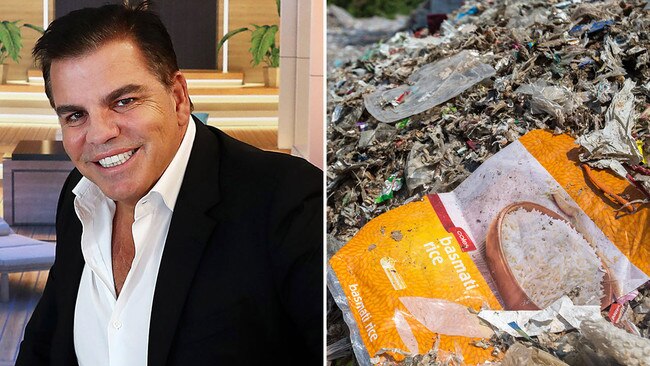Tycoon of trash Ian Malouf won’t back down on bid for waste-to-energy plant
Ian Malouf is forging ahead with plans for the plant near Sydney, as pressure mounts for Australia to treat its garbage at home.

Waste king and super-yacht aficionado Ian Malouf is pushing ahead with plans for a waste-to-energy plant near Sydney as pressure mounts for Australia to treat its garbage at home.
Sending mixed waste to Asia where what is not recycled can be burnt in the open or tossed into rivers has been the dirty secret of Australia’s waste business.
INQUIRER: Riding the plastic merry-go-round
MORE: Richest 250 — Ian Malouf
But demands for higher standards on the quality of seaborne plastic and mixed waste, which started in China, are spreading through Asia.
Australia’s $15 billion-a-year waste and recycling industry is under pressure. Billions of dollars is needed to improve sorting and recycling, but the value of recycled material is falling.
Waste to energy has been the ugly duckling of refuse management in Australia, despite more than 2000 plants operating around the world. Opponents fear burning waste would undermine the case for recycling and result in toxic emissions from incinerators.
“The issue is serious because councils can’t keep stockpiling,” Jeff Angel of the Boomerang Alliance said. “But if we go down the waste-to-energy route people will lose a generational investment in recycling.”
Supporters say waste-to-energy plants would complement recycling efforts, reduce pollution from landfill sites and improve air quality. Mr Malouf’s plan for a major waste-to-energy plant near Eastern Creek in Sydney’s west was rejected by an independent planning commission before the state election last year.
But Mr Malouf, who sold his stake in Dial a Dump for almost $500 million, has lodged an appeal which will be heard by the Land and Environment Court.
Christopher Biggs, a spokesman for the company behind the project, Next Generation, said more than 2000 energy recovery facilities were in operation worldwide and were commonplace across Europe, the US and Japan.
“In Europe they operate subject to the strictest environmental standards in the world. NSW has adopted the same strict emissions standard as Europe,” he said.
Managing director of waste-to-energy plant builder HZI, Marc Stammbach, said “the real scandal is Australia has been exporting waste and no one has wanted to know what happened to it”.
“Contaminants end up in the air or down the river to the Pacific or Indian oceans,” he said.
With exports of mixed waste banned in Asia, consumers must decide how much they are willing to pay to separate and recycle, and whether or not it made sense to recycle all plastic. Waste not recycled goes into landfill.
Dr Stammbach said the waste available for waste-to-energy production, after recycling, was about one tonne per person per year. The waste could be used to generate electricity and heat, with about 20 per cent of the total remaining after incineration. A small fraction of this could be recovered as metals that would otherwise be inaccessible and the rest used as aggregate for construction. Australia’s first waste-to-energy plant is under construction in Kwinana near Perth. Avertas Energy’s project will process 400,000 tonnes of non-recyclable waste a year and is due to open in 2021.


To join the conversation, please log in. Don't have an account? Register
Join the conversation, you are commenting as Logout